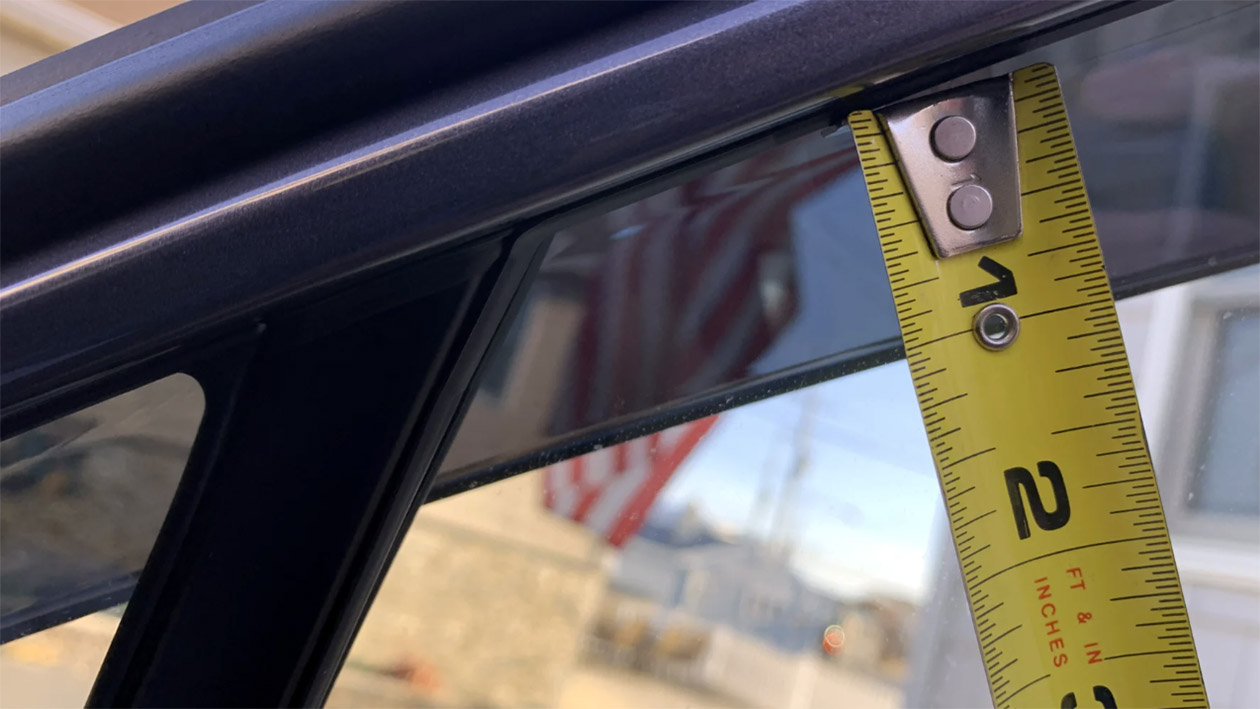
Want a sleek look and a cooler interior for your car? Window tinting offers both, but figuring out the right amount of film can feel like a puzzle. Dive in as we unravel the mystery and guide you through the process of estimating the perfect amount of tint film for your specific needs.
Key Factors: What Influences Tint Film Quantity?
Several factors play a role in determining how much window tint film you’ll need for your car. Let’s explore the key aspects to consider:
Car Model & Window Dimensions
- Vehicle Type: The amount of film needed varies significantly depending on whether you drive a compact sedan, a spacious SUV, or a heavy vehicle truck. Larger vehicles naturally require more film.
- Window Count: Are you planning to tint all windows, including the windshield (where legally permissible), or just specific areas like the rear window and backseat windows? The number of windows directly impacts the total film required.
- Window Shape & Size: Consider the size and shape of each window. Cars with expansive panoramic sunroofs or uniquely shaped windows will need additional film compared to standard rectangular windows.
Tinting Preferences & Film Type
- Full vs. Partial Tinting: Decide whether you want to tint the entire window or opt for a partial application, such as an eyebrow strip at the top of the windshield.
- Film Type: Different tint films come in various thicknesses and materials. Thicker films or those with multiple layers for heat rejection might require additional material compared to standard dyed films.
Don’t Forget the Extras
- Waste Factor: Always account for potential errors during application, practice pieces, and complex curves around window edges. It’s advisable to purchase slightly more film than your initial estimate.
- Pre-cut vs. Bulk Film: Pre-cut tint kits tailored to your car model offer convenience and precision. However, opting for bulk film rolls might be more cost-effective, especially for multiple vehicles or complex tinting projects.
Estimating Tint Film: From Measurements to Smart Choices
Now that you understand the influencing factors, let‘s explore ways to estimate the amount of window tint film you‘ll need:
Measuring Your Car Windows
- Gather Supplies: You’ll need a flexible measuring tape, pen, and paper to record measurements.
- Measure Each Window: Measure the length and width of each window you plan to tint, adding a few extra inches to account for the curvature and ensure full coverage. Note down the measurements for each window.
- Calculate Total Film Length: Add the lengths of all windows to be tinted. For example, if you’re tinting two side windows measuring 40 inches each and a rear window measuring 50 inches, you’ll need approximately 130 inches of film.
- Consider Width: Window tint film typically comes in rolls of various widths. Choose a width that comfortably covers your largest window with some excess.
Pre-Cut Tint Film Kits
- Convenience: Pre-cut kits are designed specifically for your car model, eliminating the need for manual measuring and cutting.
- Precision: These kits offer a precise fit for each window, reducing the risk of errors and ensuring a professional-looking result.
- Research & Selection: Ensure you select a kit that matches your car’s year, make, and model for accurate coverage.
General Estimation Table
While precise measurements are ideal, here’s a general guide to get you started:
| Vehicle Type | Window Coverage | Estimated Film Length (feet) |
|---|---|---|
| Sedan | All windows | 20-25 |
| SUV | All windows | 25-30 |
| Truck (Standard Cab) | All windows | 15-20 |
| Truck (Extended Cab) | All windows | 20-25 |
Additional Factors to Consider
While estimating film quantity is crucial, several other aspects can influence your tinting project:
Legal Tint Limits
Tint darkness regulations differ between states and territories. Here’s the lowdown on legal window tinting for cars in NSW:
- Front Windows: Driver and passenger windows must allow at least 35% of light through (35% VLT).
- Back Windows: Rear passenger and back windows can be darker, allowing a minimum of 20% light transmission (20% VLT).
- Commercial Vehicles: Some commercial vehicles carrying goods may have darker rear windows (5% VLT). Check the RMS website to see if your vehicle qualifies.
- Windscreen: No tint is allowed on the front windscreen except for a sun strip across the top.
Choosing the Right Tint Film
- Film Types: Various tint films offer different benefits:
- Dyed Film: Affordable and provides basic sun protection.
- Metalized Film: Offers better heat rejection and glare reduction but may interfere with electronic signals.
- Carbon Film: Provides excellent heat rejection without signal interference and has a matte finish.
- Ceramic Film: The highest quality option, offering superior heat rejection, UV protection, and clarity.
- Darkness Levels: Choose a tint darkness that suits your preferences and complies with local regulations.
Installation Expertise
- DIY vs. Professional: Decide whether to tackle the tinting process yourself or seek professional installation.
- DIY Considerations: Requires patience, attention to detail, and the right tools. Be prepared for a learning curve and potential challenges.
- Professional Advantages: Ensures a flawless finish, expertise in handling different film types, and knowledge of local regulations.
Additional Costs
- Tools & Materials: DIY projects require purchasing tools like squeegees, application solutions, and cutting blades.
Determining the right amount of window tint film for your car involves understanding various factors, from your car model and tinting preferences to local regulations and film types. By following the guidelines and tips provided in this guide, you can confidently estimate the film quantity needed and embark on your tinting journey, whether through a DIY approach or with professional assistance. Remember, accurate measurements, informed choices, and responsible tinting practices are key to achieving a sleek look, enhanced comfort, and a satisfying result for your vehicle.

